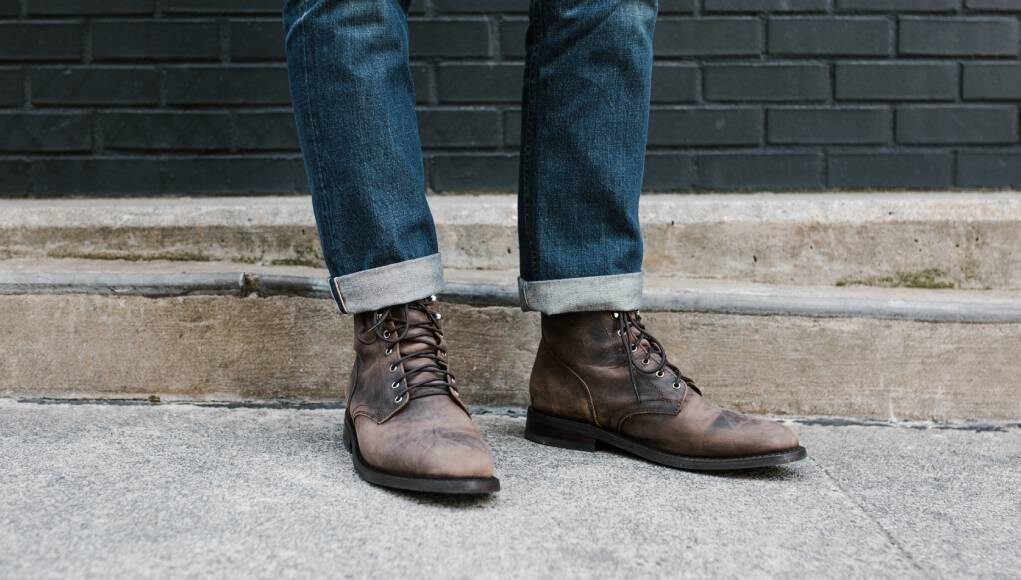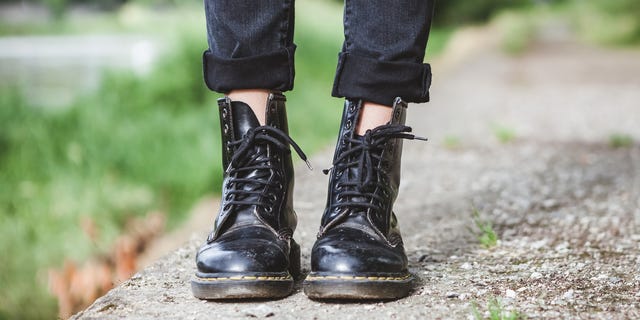Introduction
How To Waterproof Leather Boots – When it comes to leather boots, keeping them protected from water and moisture is crucial to maintain their durability and appearance. Waterproofing your leather boots not only extends their lifespan but also ensures your feet stay dry and comfortable in wet conditions. Whether you’re an outdoor enthusiast, a hiker, or simply want to protect your favorite pair of leather boots, this guide will walk you through the essential steps of waterproofing.

Firstly, you’ll discover the importance of choosing the right waterproofing products, such as waxes, sprays, or creams, that are specifically designed for leather. Understanding the different types of waterproofing agents available will help you make an informed decision based on your boot’s material and intended use.
Next, we’ll delve into the step-by-step process of waterproofing leather boots. From cleaning and conditioning the leather to applying the waterproofing agent, you’ll gain insights into the techniques and tools required for effective protection. We’ll also discuss common mistakes to avoid during the waterproofing process to ensure optimal results.
Do leather boots need to be waterproofed?
You don’t have to waterproof every pair of boots you own, but you should consider waterproofing a leather work boot or hiking boot because these are the types of shoes most likely to come into contact with water – and nobody wants wet feet!
While leather boots are naturally more water-resistant than other types of footwear, it is still beneficial to waterproof them. Waterproofing leather boots provides an additional layer of protection against water, moisture, and other elements, helping to prolong their lifespan and maintain their appearance.
Leather is a porous material, which means it can absorb water and become damaged over time if not properly protected. Waterproofing treatments create a barrier on the surface of the leather, preventing water from seeping in and causing potential issues like warping, discoloration, or mold growth.
Waterproofing is particularly important if you plan to wear your leather boots in wet or snowy conditions, or if you frequently encounter rain or puddles. By applying a waterproofing agent, you can ensure that your feet stay dry and comfortable, preventing discomfort and potential foot problems associated with prolonged exposure to moisture.
Furthermore, waterproofing can also help to prevent the leather from drying out, cracking, or becoming stiff. It adds a level of conditioning and nourishment, preserving the suppleness and flexibility of the leather.
Does Vaseline waterproof leather boots?
If you’re having problems with your leather shoes, you can always use Vaseline to waterproof your shoes temporarily. You will need to clean your shoes beforehand, then simply coat them in a layer of Vaseline and it’ll do the job just as well.
Vaseline can provide a temporary water-resistant effect on leather boots, but it is not an ideal long-term solution for waterproofing. Vaseline is primarily a petroleum jelly product, and while it may create a barrier on the surface of the leather, it does not offer the same level of protection and durability as specialized waterproofing products designed specifically for leather.
Using Vaseline on leather boots can have drawbacks. It can leave a greasy residue that may attract dirt and dust, leading to a buildup that is difficult to clean. Additionally, Vaseline does not penetrate the leather or provide deep conditioning, which is important for maintaining the quality and longevity of the boots.
For effective and long-lasting waterproofing, it is recommended to use products specifically formulated for leather. There are various options available, such as waxes, sprays, and creams designed to nourish the leather, create a protective barrier, and repel water effectively. These products are developed with the specific needs of leather in mind, offering better durability, breathability, and overall performance when compared to Vaseline.
To ensure the best results and protection for your leather boots, it is advisable to follow the manufacturer’s instructions and choose a high-quality leather waterproofing product.
Can I put waterproof spray on leather boots?
That’s why you should consider waterproofing your shoes before you jet off on your next adventure, particularly if you’re heading to a damp destination. Overall, waterproofing sprays work by filling the pores in fabric — whether leather, canvas, suede, or otherwise — with a material like silicone that repels water.
Yes, you can use a waterproof spray on leather boots as a method of protecting them from water and moisture. Waterproof sprays are specifically designed for use on leather and can create a protective barrier that helps repel water and prevent it from penetrating the leather.
When applying a waterproof spray to leather boots, it is essential to follow the instructions provided by the manufacturer. Generally, the process involves cleaning the boots to remove any dirt or debris, ensuring the surface is dry, and then applying an even coat of the waterproof spray. It’s important to pay attention to the coverage and ensure all areas of the boots are adequately treated, including seams and stitching.
Waterproof sprays typically work by forming a thin, invisible layer on the surface of the leather. This layer helps to repel water, while still allowing the leather to breathe. It’s worth noting that while waterproof sprays can provide effective short-term protection, they may require reapplication over time, especially with regular use or exposure to harsh conditions.

It’s recommended to choose a waterproof spray specifically formulated for leather and to test it on a small, inconspicuous area of the boots before applying it to the entire surface. This will help ensure compatibility with the leather and avoid any potential adverse effects on the appearance or texture of the boots.
How can I waterproof my leather boots naturally?
Boots wax is another popular product for waterproofing leather boots. The most famous one is beeswax. To treat your boots with wax, you need to heat the wax and boots a bit to make them more pliable. Then, rub the wax across the boot in both directions with fingers.
If you prefer natural methods to waterproof your leather boots, there are a few options you can consider. While these natural methods may not provide the same level of long-lasting waterproofing as specialized products, they can offer some degree of water resistance. Here are a couple of natural approaches you can try:
1. Beeswax: Beeswax is a popular natural option for waterproofing leather. Start by cleaning your boots to remove any dirt or debris. Then, using a clean cloth or your fingers, apply a thin layer of melted beeswax to the surface of the leather. Make sure to cover the entire boot, paying attention to seams and stitching. Allow the beeswax to dry and absorb into the leather, and then buff the boots with a soft cloth to bring out the shine.
2. Oil-based treatments: Natural oils like mink oil, coconut oil, or neatsfoot oil can also provide some level of waterproofing for leather boots. Clean the boots thoroughly, and then apply a small amount of oil to a clean cloth. Rub the oil onto the leather in circular motions, making sure to cover the entire surface. Allow the oil to absorb into the leather overnight, and then wipe off any excess oil with a clean cloth.
These natural methods may alter the appearance or texture of the leather to some extent, so it’s always a good idea to test them on a small, inconspicuous area of the boots before treating the entire surface. Additionally, natural methods may need more frequent reapplication compared to specialized waterproofing products.
Can you walk with leather boots in rain?
While leather boots can handle the rain just fine, sometimes you may notice a slight discoloration of the leather. This could just be a case of the leather still being damp, so I suggest drying the boot carefully.
Yes, you can walk with leather boots in the rain. Leather boots, especially those that have been properly treated and maintained, can withstand light to moderate rain without being significantly affected. However, it’s important to note that while leather is naturally water-resistant to some extent, it is not completely waterproof.
Walking in heavy rain or through deep puddles for an extended period may eventually cause water to penetrate the leather, leading to dampness inside the boots. Excessive exposure to water can also affect the leather’s texture and may require more thorough drying and conditioning afterward to maintain its quality. To ensure your leather boots are better equipped to handle rain, you can take several steps:
1. Waterproofing: Apply a specialized waterproofing product, such as a spray, wax, or cream, designed for leather. This will provide an extra layer of protection against moisture.
2. Regular maintenance: Clean and condition your leather boots regularly to keep them in optimal condition. This helps to maintain their water-resistance and overall durability.
3. Quick drying: If your leather boots get wet, allow them to dry naturally at room temperature. Avoid using direct heat sources like radiators or hairdryers, as excessive heat can damage the leather.
4. Post-rain care: After walking in the rain, wipe off any excess water or mud from your boots and allow them to dry thoroughly. Conditioning the leather with a leather conditioner can help restore its natural oils and prevent drying or cracking.
While leather boots can handle light rain, it’s always a good idea to be cautious and avoid prolonged exposure to excessive moisture.
Does coconut oil waterproof leather boots?
Treating leather with coconut oil does have a few upsides: it will soften the leather and provide a thin layer of waterproof protection. Because coconut oil is a natural oil (like neatsfoot oil, olive oil, and mink oil), it will darken leather boots when applied.
Coconut oil can provide some degree of water resistance to leather boots, but it is not a reliable or long-lasting method of waterproofing. While coconut oil may initially create a barrier on the surface of the leather, it does not offer the same level of protection and durability as specialized waterproofing products designed for leather.

Coconut oil is a natural oil that can condition and soften leather, but it may not effectively repel water over time. It tends to be absorbed by the leather rather than creating a strong waterproofing barrier. As a result, its water-resistance properties can diminish relatively quickly, especially with exposure to moisture or repeated wear.
If you choose to use coconut oil on your leather boots, it’s essential to be aware of its potential drawbacks. It can darken the leather’s color, alter its appearance or texture, and may leave behind a greasy residue. Additionally, coconut oil may not be suitable for all types of leather, and its effect can vary depending on the leather’s quality and finish.
For more reliable and long-lasting waterproofing, it is recommended to use specialized leather waterproofing products, such as waxes, sprays, or creams specifically designed for leather. These products are formulated to create a protective barrier, repel water effectively, and maintain the leather’s quality and appearance over time.
What can I put on my leather boots to protect them?
A leather conditioner will help keep the microscopic fibers in your shoes supple and prevent cracking. You don’t have to use a conditioner every time you wear your shoes. Protecting leather shoes with a coating of conditioner once every few months is more than enough. To protect your leather boots, you can use various products that help condition and shield them from damage. Here are a few options:
1. Leather Conditioner: Applying a leather conditioner helps keep the leather moisturized and prevents it from drying out and cracking. Look for a conditioner specifically designed for leather footwear and follow the instructions provided by the manufacturer.
2. Leather Protector/Spray: A leather protector or spray creates a protective barrier on the surface of your boots, guarding them against water, stains, and spills. These products usually need to be applied in a well-ventilated area and require some drying time.
3. Beeswax or Leather Wax: Beeswax or leather wax can be used to create a protective layer on the leather surface. Gently apply the wax using a cloth or brush, and then buff it to a shine. This method can also help in waterproofing your boots to some extent.
4. Silicone-Based Water Repellent: Silicone-based sprays are effective in providing water resistance to leather boots. They create a barrier that helps prevent water from penetrating the leather. However, it’s essential to test the spray on a small, inconspicuous area first to ensure it doesn’t discolor or damage the leather.
Before applying any product, read the instructions carefully, and consider testing it on a small, hidden area of your boots to check for any adverse effects. Additionally, regular cleaning and maintenance are crucial to prolong the lifespan of your leather boots.
How can I shine my leather boots without polish?
Pour some rubbing alcohol on a cotton ball or pad and rub in circular motions over the leather school shoe. Then all you need to do is let the boots dry. If you don’t have polish on hand, there are still a few methods you can use to shine your leather boots:
1. Use Olive Oil or Coconut Oil: Dab a small amount of olive oil or coconut oil onto a soft cloth and rub it gently into the leather in circular motions. Let it sit for a few minutes, and then buff the leather with a clean cloth to achieve a shine. However, keep in mind that this method may darken the leather slightly, so test it on a small, inconspicuous area first.
2. Use a Banana Peel: Rub the inside of a banana peel directly onto the leather. The natural oils and wax in the peel can help moisturize and shine the leather. Afterward, buff the boots with a clean cloth to bring out the shine.
3. Use Vinegar and Water Solution: Mix equal parts of white vinegar and water in a spray bottle. Lightly spritz the solution onto a soft cloth and gently buff the leather in circular motions. The vinegar helps remove dirt and grime while adding a subtle shine to the boots.
To always test these methods on a small area first to ensure they don’t cause any adverse effects or discoloration. It’s also important to note that while these methods can provide temporary shine, using a dedicated leather polish will give your boots a more professional and long-lasting shine.
Conclusion
Waterproofing leather boots is an essential step in maintaining their durability and extending their lifespan. By following the appropriate techniques and using the right products, you can effectively protect your boots from moisture, stains, and other damaging elements.
The first step is to clean the boots thoroughly, removing any dirt or debris. Then, choose a suitable waterproofing product such as a silicone-based spray or a leather protector. Apply the product evenly, making sure to cover the entire surface of the boots. Allow sufficient drying time, as indicated by the manufacturer.
Regular maintenance is crucial in preserving the waterproofing properties of your boots. Clean them regularly with a damp cloth and reapply the waterproofing product as needed. It’s also advisable to store your boots in a cool, dry place away from direct sunlight.
By taking these steps and incorporating proper care into your routine, you can enjoy the benefits of dry and well-protected leather boots, ready to withstand various weather conditions and last for years to come.


